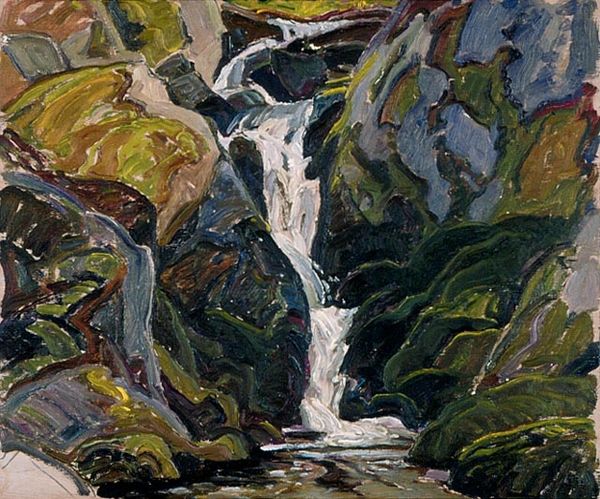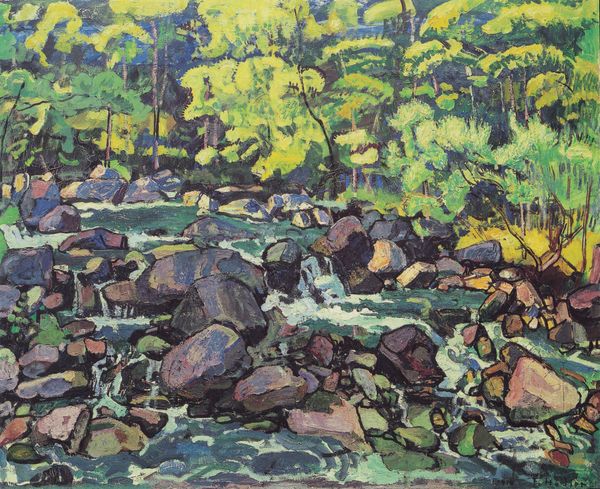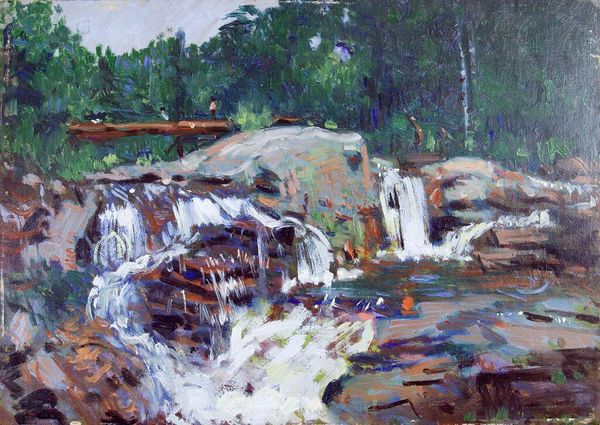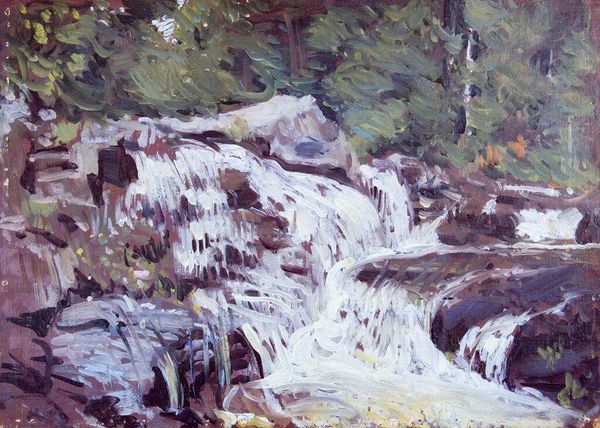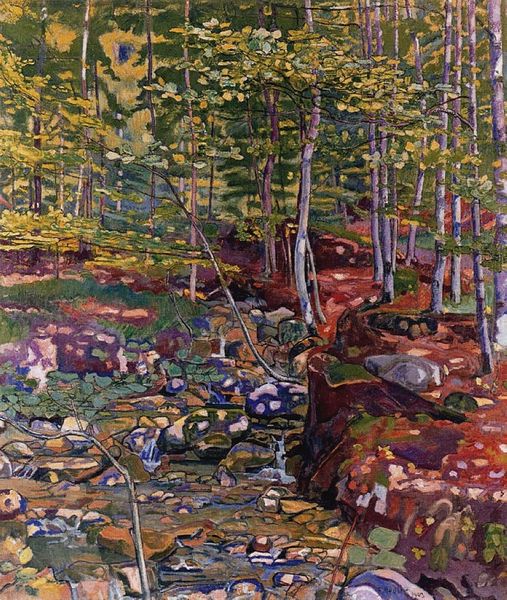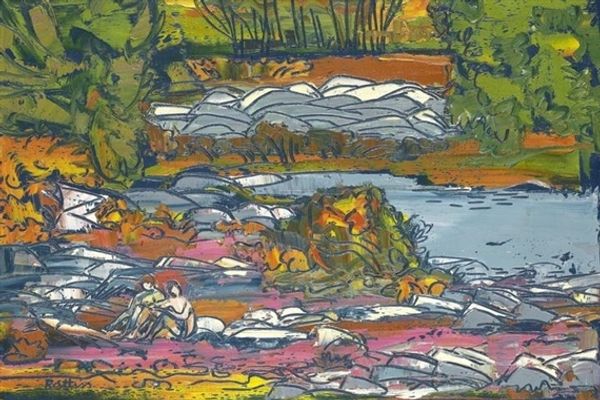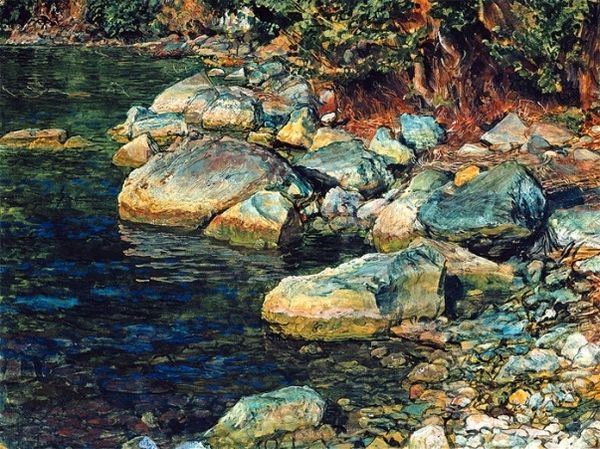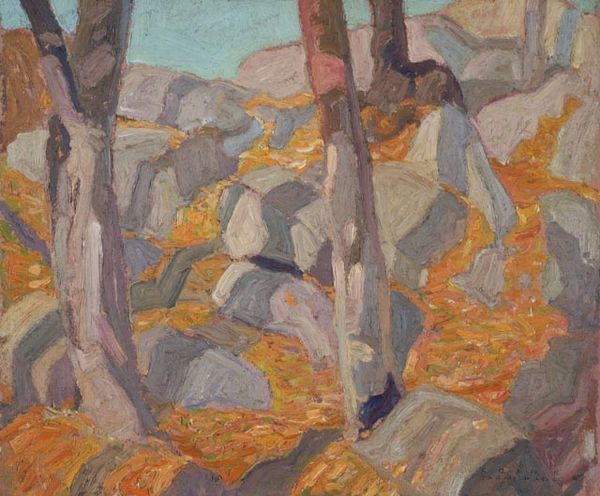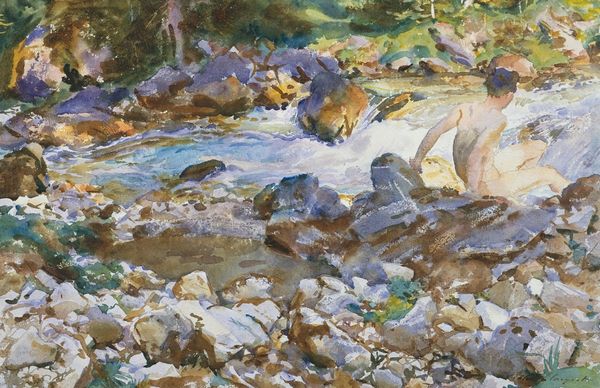
Copyright: Public domain
Editor: So, this is J.E.H. MacDonald’s "The Little Falls Sketch," painted in 1918. The heavy impasto and bright colours give it an almost tactile quality, like I could reach out and feel the rocks and rushing water. How would you interpret this landscape? Curator: This piece reflects the rising national consciousness in Canada following World War I. Artists like MacDonald sought to define a distinctly Canadian identity, turning to the land itself for inspiration. MacDonald painted “en plein air," capturing the raw energy of the natural landscape directly onto the canvas. How do you see that connection to Canadian identity expressed here? Editor: Well, it feels very different from the European landscapes I’m used to. It's less about manicured gardens and more about rugged, untamed nature. The sketch conveys a sense of place, and also almost spiritual reverence, right? Curator: Exactly. Think about the socio-political context. Urban centers were growing, but artists also wanted to assert Canada’s independence from Europe by embracing its wilderness. Consider the role the Group of Seven played in shaping this nationalist imagery. How do you think that larger art movement impacted MacDonald's individual approach? Editor: Knowing it’s part of that bigger movement makes me see it differently. It is more than just a pretty picture. It's a statement about what Canada *is*, at least ideally. Curator: Yes. Its public reception played a key role in crafting and negotiating cultural values. Its impact still resonates in shaping how Canadian landscapes are understood and promoted today. This dialogue invites reflection on historical context, nationalist movements, and lasting cultural influences. Editor: Absolutely. Looking at it now, I understand the cultural significance much more. The "Little Falls Sketch" has become even more interesting than I first thought.
Comments
No comments
Be the first to comment and join the conversation on the ultimate creative platform.

